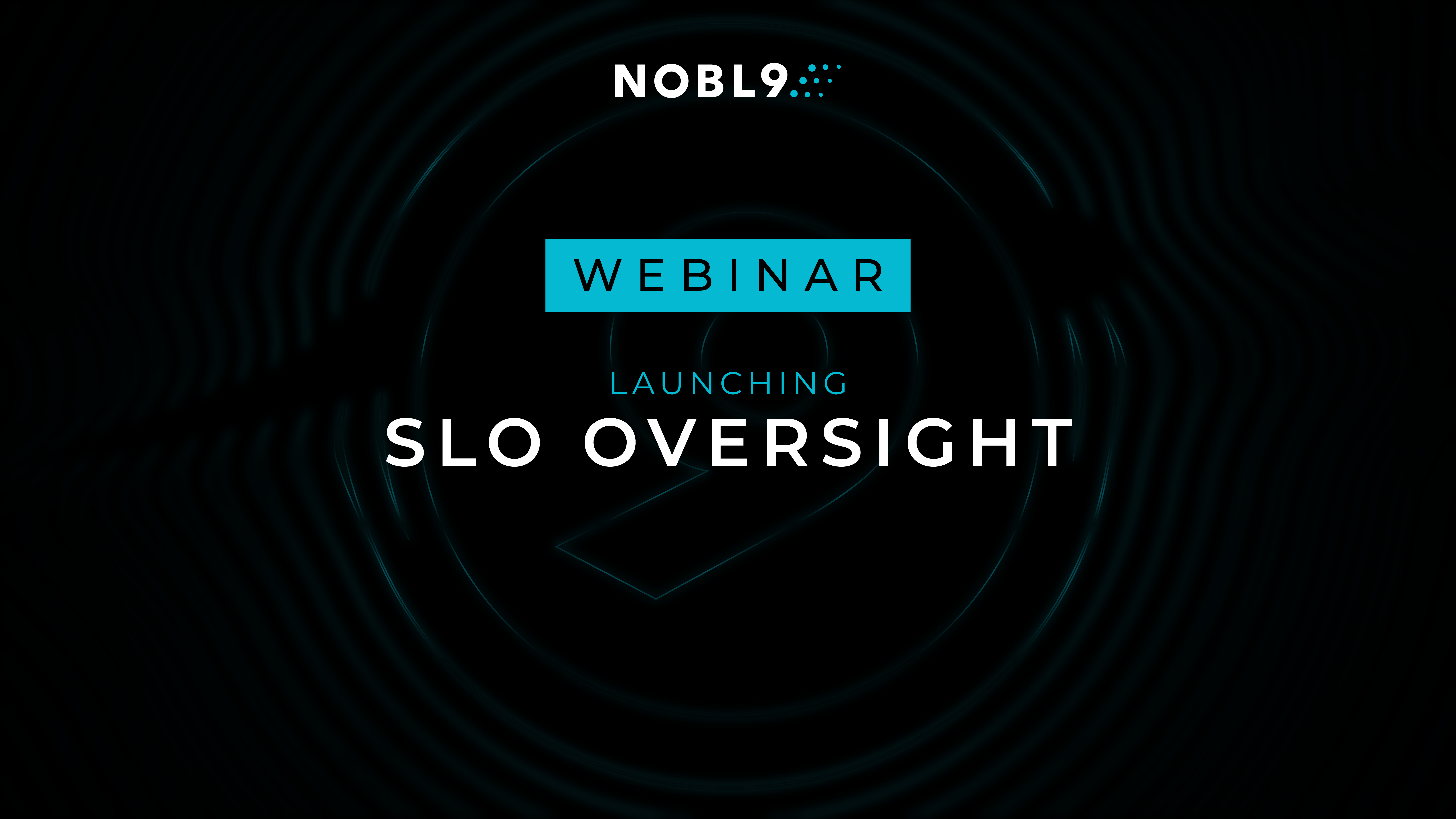More by Natalia Sikora-Zimna:
Resilience First: A Customer Success Strategy for Nobl9 Nobl9 Launches Replay: Instant SLOs from Historical Data SLOs Made Easier with Nobl9 and CloudWatch Metrics Insights From Sparse Metrics to Actionable Alerts: An SLO Case Study Your Reliability Tools Are Down? Nobl9 Is Here to Help!| Author: Natalia Sikora-Zimna
Avg. reading time: 2 minutes
As people and services alike become more reliant on technology, ensuring reliability across dependencies, tech stacks, and microservices becomes even more critical.
But how can organizations maintain reliability without breaking the bank or compromising user satisfaction?
Service Level Objectives (SLOs) provide the answer, offering a framework to establish measurable goals for system reliability and performance. A well-crafted SLO should align closely with organizational needs and meet the expected performance levels demanded by customers.
However, achieving these goals requires more than just setting SLOs. Scheduling pauses in error budget consumption to align with fluctuating user activity levels or planned maintenance is crucial for optimizing resource utilization and minimizing unnecessary expenses. Nobl9's Error Budget Adjustments feature empowers businesses to schedule periods of low user volume or planned downtime without impacting their reliability metrics. By adjusting error budget calculations accordingly, companies can ensure that alerts are triggered only when necessary, minimizing noise and allowing for more precise monitoring of service health. This level of customization enhances visibility and control over complex service environments, enabling businesses to meet their reliability goals more effectively.
Error Budget Adjustments improve the accuracy of your SLO calculations by allowing teams to exclude planned events from the equation. These events can span from previously mentioned periods of low traffic or product usage to scheduled maintenance windows that are anticipated and already factored into your error budget.
To illustrate, let’s consider a product with uneven user engagement, such as a subscription-based online fitness platform offering live workout sessions and personalized plans. By setting SLOs per geography, you can pinpoint expected peak hours and low-traffic periods. While most users engage during peak hours in their respective time zones, there's a noticeable decline in activity during late-night and early-morning hours. In such instances, if an error occurs during the low-traffic period, it's unlikely to be noticed by customers.
During periods of app inactivity, spikes in the error budget consumption depleted the SLO budget.
In this example, the SLO was impacted by an error, but it occurred when customers weren’t actively using the platform. Focusing solely on the error budget consumption without considering customer activity in the same timeframe can lead to inefficient resource allocation. Using team resources to address such issues may not be necessary since they occur when customers are least active. By adjusting the error budget calculations to exclude these periods, we ensure that the reliability metrics more accurately reflect service quality during peak usage times. This approach helps prioritize efforts and resources where they impact customer satisfaction most.
So, how does it work in practice? Error Budget Adjustments enable teams to define planned downtime or low traffic periods during which errors or incidents will not count against their SLOs.
Once the adjustment is applied, the selected period is ignored in the error budget calculations, effectively treating it as if it never occurred. However, the SLI data remains intact, allowing you to maintain a record of all events that impacted your SLOs. System annotations will enable you to quickly identify the times excluded from the error budget, facilitating a clear understanding of the correlation between the SLI and Error Budget charts. This practice ensures transparency and clarity in tracking and analyzing system reliability metrics.
Adjustments exclude selected periods from error budget calculations. System annotations highlight excluded times.
Error Budget Adjustments fine-tune SLO calculations to reflect system performance during typical operations (when issues would impact the most users) more accurately, ensuring teams aren't unfairly penalized for incidents that minimally impact customer experience. By silencing alerts during these low-impact periods, SRE teams avoid unnecessary interruptions, streamlining the on-call process and reducing alert fatigue. This not only optimizes operational efficiency but also enhances team morale.
More importantly, Error Budget Adjustments embody the core tenets of SLO-driven development and reliability engineering. By focusing on significant metrics and real-world impacts rather than just numbers, these adjustments encourage a culture that values continuous improvement and innovation. This strategic approach ensures that reliability efforts are directly tied to business objectives, enhancing customer satisfaction and fostering sustainable growth.
If you’re burned out from alert fatigue, interested in fully investing in SLOs, or frustrated with your alert toolings’ lack of flexibility, we can help! Sit down with one of our experts, or jump right in with our free edition today!




.png)





.png?width=1200&height=628&name=Building%20Reliable%20E-commerce%20Experiences%20(42).png)
.png?width=1200&height=628&name=Building%20Reliable%20E-commerce%20Experiences%20(34).png)






Do you want to add something? Leave a comment